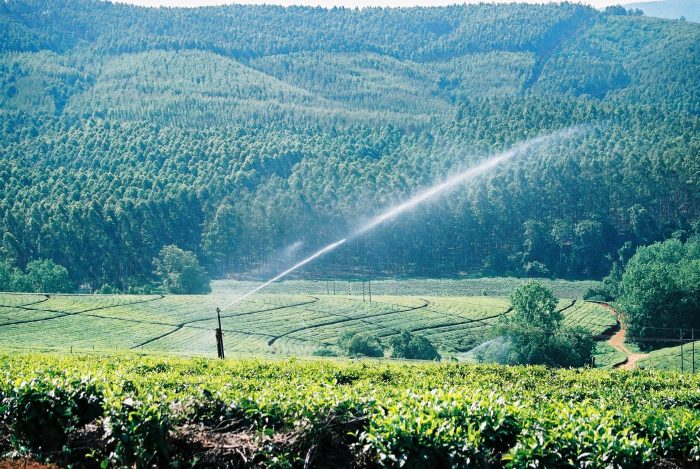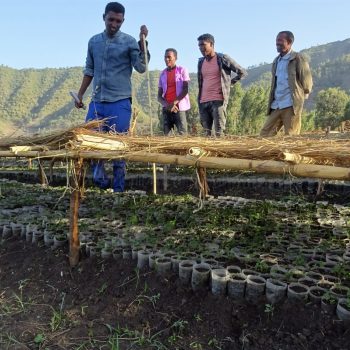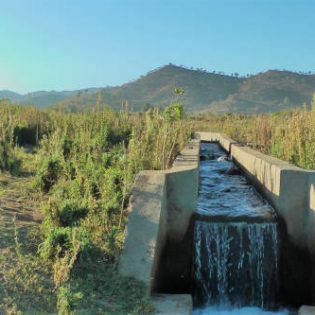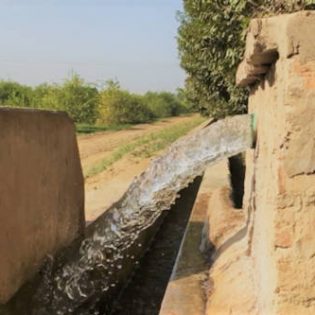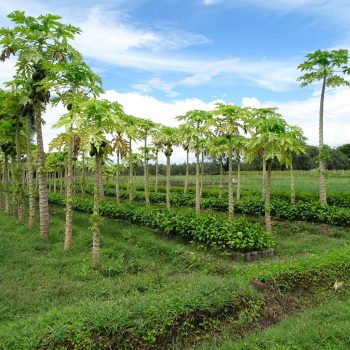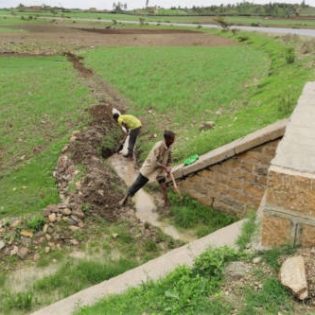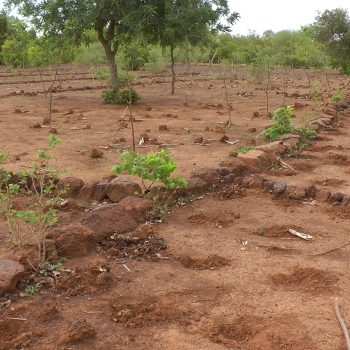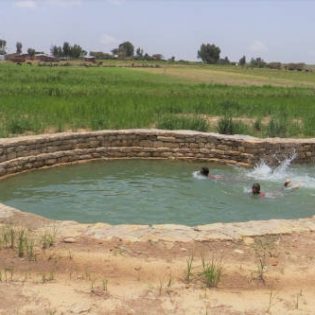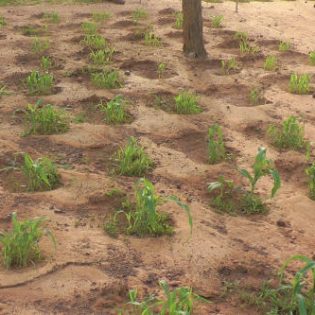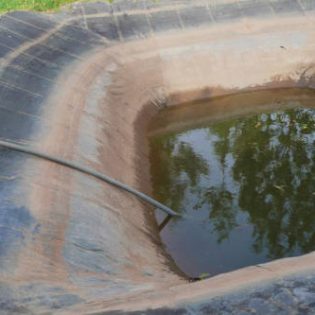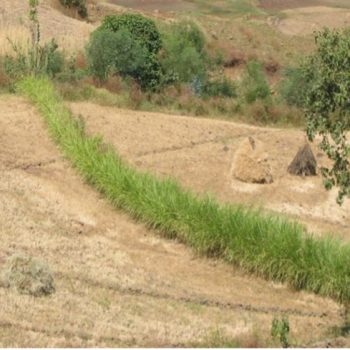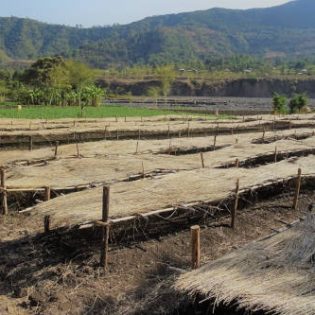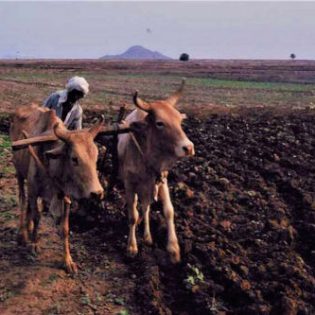| Using pressurised irrigation systems that reduce evaporation while increasing productive transpiration can improve crop production and water use efficiency at the field level as compared to surface irrigation methods. Evaporation varies with agricultural practices (Burt et al., 2005) and ranges from 4% to 25% in sprinkler irrigation systems (Burt et al., 2001), drip irrigation 10% and less, and up to 40% and more in rainfed systems (Rockström et al., 2010). Surface irrigation application methods often have low water application efficiencies; usually around 40% because of high evaporative losses particularly at the start of a cropping season. Hence in switching to pressurised systems field application efficiencies can take a jump, besides that also system conveyance losses (ie. conveyance efficiency) are minimal. Pressurized systems have minimal runoff and evaporation losses and hence can have better field application efficiencies.
There are several pressurized systems in use and a service industry has developed that produces and installs the systems. In some cases, packages are offered whereby for instance drip systems are combined with soil moisture sensors and advise whether to irrigate or not is generated. Pressurized systems include: (1) Drip (or trickle) irrigation systems (2) Sprinkler systems (3) Centre-pivot systems (4) Bubbler systems The benefits of precision irrigation are not only limited to water savings. Studies have shown that 10-54% increase in yield is possible, especially in the horticulture field if more precise water applications could be implemented. Benefits such as reduced incidence of fungi in fruit and vegetable farms are also related benefits. However, care should be taken in the use of precision irrigation as drip irrigation can lead to accumulation of salt in the root zone of plants and hamper development of crops in salt affected areas or in areas where saline water is used for irrigation. The major trade-off between surface and pressurized methods lies in the relative costs of land levelling for effective gravity distribution and energy for pressurization (Walker, 1989). In tree crops, for example, the E reductions by localized irrigation can be substantial (Bonachela et al., 2001), especially when the canopy cover is sparse. Although this ‘gain’ must be off-set against the investments costs for such systems. There is considerable difference as to the ease of use and longevity of the systems. In drip irrigation the emitters for instance are often weak link, as they make clog easily and are difficult to clean. There is also a low-cost version suitable for small farmers. Mini sprinklers for instance are widely available at low costs in Kenya for instance. There is also the mini-pivot system (developed by Practica) and several versions of simple tubes being used as low cost drip systems.
|
Additional information
| Agriculture | Irrigated |
|---|
